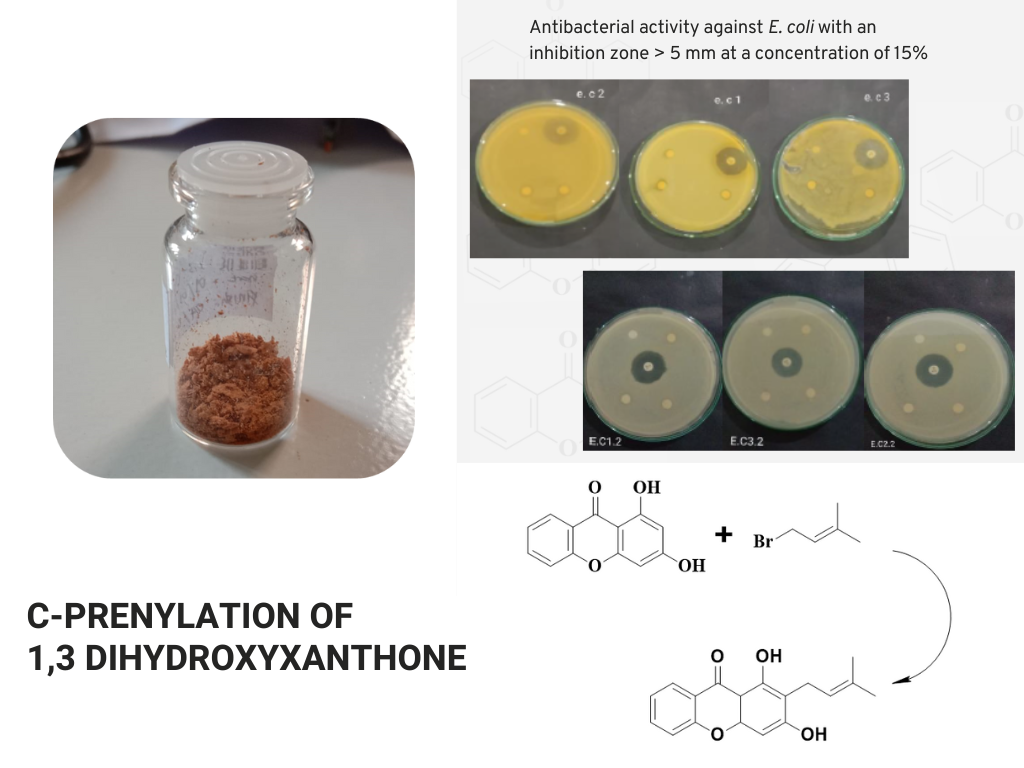
C-prenylation of 1,3 dihydroxyxanthone: synthesis, characterization and antibacterial activity
DOI:
10.29303/aca.v6i1.149Published:
2023-02-25Issue:
Vol. 6 No. 1 (2023)Keywords:
1,3-dihydroxyxanthone, 1,3-dihydroxy-2-prenylxanthone, prenylation, antibacterialArticles
Downloads
How to Cite
Yuanita, E. ., Jannah, B. K. ., Ulfa, M. ., Sudirman, Ningsih, B. N. S. ., & Dharmayani , N. K. T. . (2023). C-prenylation of 1,3 dihydroxyxanthone: synthesis, characterization and antibacterial activity. Acta Chimica Asiana, 6(1), 279–286. https://doi.org/10.29303/aca.v6i1.149
Downloads
Download data is not yet available.
Metrics
Metrics Loading ...






 Indonesian Chemical Society, Chapter Nusa Tenggara. Jalan Majapahit 62 Mataram, University of Mataram, 83125, Indonesia
Indonesian Chemical Society, Chapter Nusa Tenggara. Jalan Majapahit 62 Mataram, University of Mataram, 83125, Indonesia





